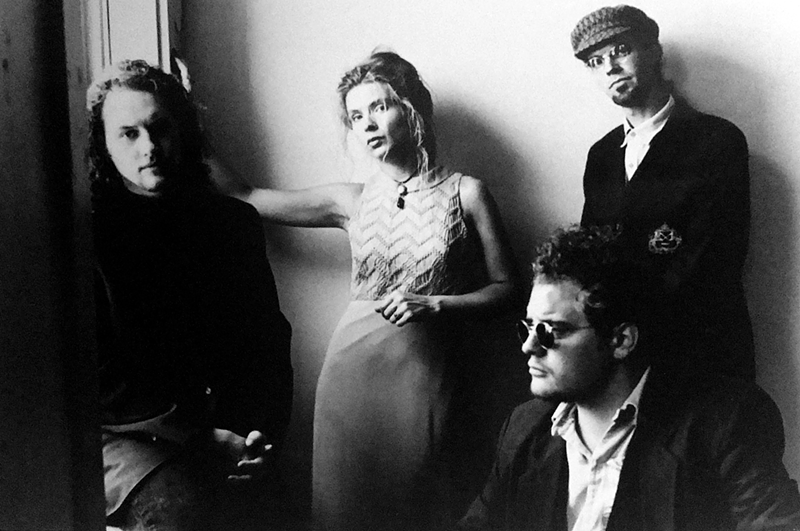My daughter was born in 1994. So was CityBeat. They both turned 25 this year.
Holy crap on a communion cracker, I’m old.
When John Fox recruited me for his new venture back in ’94, he changed my life in a significant way. I had written album reviews for him when he was the editor of Everybody’s News while dipping my toe into a return to freelance writing as an adjunct to my graphic design career. When Fox laid out his philosophical plans for CityBeat, he made it clear that he didn’t need me for my sharp reviewer’s ear. He wanted me to write features, which I had done for local publications like The Entertainer and Ink Wire in the ’80s, but hadn’t taken a crack at in nearly five years. He asked if I could commit to that. I swallowed hard and said yes. I never guessed that I’d still be fulfilling that promise nearly 20 years into the new millennium.
When I first arrived in Cincinnati in 1982, the music scene was populated with a healthy percentage of human jukeboxes — bands playing the hits of the day for bar patrons who wanted the immediacy of live music but merely as a loud soundtrack for excessive drinking and attempts at getting laid. But there was an infinitely more interesting scene bubbling up in the Clifton area’s various venues — Shipley’s, Cory’s, Dollar Bill’s and Bogart’s, among others — which featured a variety of bands performing original material across a wide stylistic spectrum. I was desperately homesick my first few months here but my initial exposure to The Raisins and the Warsaw Falcons led me to the conclusion that I didn’t have to go home — I was already there.
Further scene safaris revealed a huge subculture of insane musical creativity: The Modulators, The Auburnaires, The Libertines, Junta, Mara, Wheels, the wildly compelling H-Bomb Ferguson and his pet constrictor Boo Boo, the always amazing Peter Mayer in whatever form he took at any given moment, Spike and all subsequent iterations of guitar wizard David T. Chastain’s projects. It was almost an anti-scene, as old bands inspired the formation of new bands, not for the purpose of sounding like the old band but to do something completely original. In that moment, music felt synonymous with magic.
When Fox approached me about writing for CityBeat, I’d been covering local music for about a decade. He had already secured Mike Breen as his music editor, which I thought was a great selection; I had always loved Breen’s features and reviews in Everybody’s News and looked forward to having a working relationship with him. Twenty-five years later, he and I (and theater critic Rick Pender and arts writer Jane Durrell) are the last names remaining from the masthead from CityBeat’s first issue, and I still look forward to everything Breen puts on the page.
By the time of CityBeat’s debut in mid-November of 1994, Cincinnati’s music scene had scored a number of impressive successes outside of the city’s confines. The Afghan Whigs — the first non-Northwest band to sign a contract with renowned indie label Sub Pop — were a year out from releasing their breakthrough Elektra Records debut, Gentlemen. The Ass Ponys had secured a major label deal with A&M Records. And Over the Rhine had hit so quickly with their first self-released album, 1991’s ‘Til We Have Faces, that they were tapped by Bob Dylan to open a string of Midwest dates; they signed with IRS Records in 1995.
As the local music scene grew and evolved in the mid-’90s, CityBeat bore witness to the kaleidoscopic array of musical talent that was emerging from the Cincinnati community. More importantly, the paper became an active force in shaping the scene by shining a light on bands and artists that might not have received coverage in the absence of a broadly inclusive alternative weekly with an informed and committed writing staff. The names have changed many times in 25 years, but the consistent qualities that have characterized everyone who has ever covered music for CityBeat are a passion for music in all its varied forms and the desire to tell the stories of the artists that create that music.
Throughout my tenure at CityBeat, I’ve been given the sacrosanct duty of factually recounting the stories of local, regional and national artists in order to attract album and ticket buyers, which in that light seems like little more than crass commercial promotion. I tend to view it on a slightly higher plane. People entrust me with the responsibility of talking about their art and their lives to a wide audience in an effort to entice readers to engage in musical explorations they might not have undertaken without our journalistic intervention. I know that my fellow freelancers, from those who appeared in CityBeat’s inaugural issue to the current crop of excellent writers, would agree with that assessment because I’ve read it within and between every passionate line of their stories.
When I began writing about Cincinnati music, the artists I covered were my peer group. Now, a broad percentage of the people I cover for CityBeat are young enough to be my children. The one constant in that long arc is that, in many instances, interview subjects have become friends. Very often, getting to the heart of a musician’s influences necessarily involves discussing their early lives and that can lead to the potentially uncomfortable situation of having an intimate conversation with a relative stranger. I’ve always made an effort to have conversations rather than conduct interrogations, sharing stories about my own life to put my subjects at ease and let them know that the exchange of personal information is a two-way street. The dividends of that methodology have been open, honest discussions resulting in better stories and a personal bond that transcends the reasons for our initial meeting. Some interviews have been lightning strikes, a single meeting leading to a single story, others have been ongoing conversations over many years that have grown into friendships. In any event, I value each and every interaction with the amazing and fascinating people that I’ve had the honor of covering in CityBeat.
The bands have certainly changed since CityBeat’s earliest days; some morphed into different forms, some took long breaks and came back as strong as ever, some disappeared after an impressive start, some stretched out to take a shot at the brass ring. Most of the venues that were publicized in the paper’s nascent stage (The Warehouse, Tommy’s on Main, Ms. Kitty’s, King Tut’s Wa Wa Hut, Ripley’s, Salamone’s and so many more) either changed ownership or names or both, while others disappeared entirely. The true constant in all of this continental shifting has simply been that local bands play gigs and venues book them.
Since 1994, CityBeat has been helping our readers make an informed decision about how to spend their entertainment dollars, and with a little luck, we’ll revisit this conversation in 2024. Hopefully, my hoverchair will be charged up and ready to carry me to interviews with kids young enough to be my grandchildren, where I will try to explain why I think they sound like a band called The Beatles but with, you know, a Death Metal/Synth Pop/Hip Hop twist. Those will be the days.






